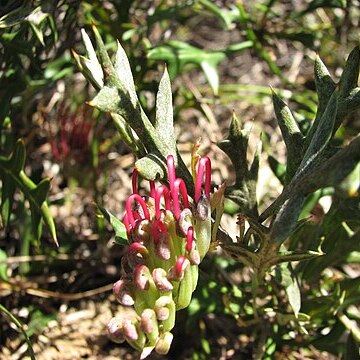A low lying or small shrub. It grows up to 0.6-2 m high. It can spread 1.5-3 m wide. The young growth has silky hairs. The leaves are small. They vary considerably in shape. They are 1.5-7 cm long by 1-4 cm wide. The flowers are yellow or pink and arranged like a tooth brush. The fruit are 1.5 cm long.


